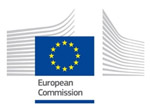Optimization of irrigation scheduling for barley crop, combining AquaCrop and MOPECO models to simulate various water-deficit regimes
To optimize the irrigation scheduling of field crops to maximize irrigation water productivity requires expert knowledge of the crop development and its productive response to water deficit. Implementing this idea with commodities such as barley, whose current global profitability is low, and, more specifically, in areas where the availability of water resources for irrigation is limited, requires a proper decision support system. In this research, AquaCrop and MOPECO models were used to compute and compare both the crop-water production and irrigation water productivity functions generated by several irrigation strategies provided by each model for the typical irrigated crop barley grown in the area. Furthermore, we evaluated both models’ performance with a 3-year field experiment applying the methodology of optimized regulated deficit irrigation for limited volumes of irrigation water (ORDIL) in barley crop. The results obtained from the production functions show that gross irrigation water depths (GIWD) of more than 310 mm can be useful to attain the potential crop yield, depending on the criteria considered to generate the irrigation scheduling. However, with less GIWD available, the simulated barley development was subjected to water deficit, leading to a reduction in both crop yield and irrigation water productivity. Thus MOPECO simulated higher crop yields and irrigation water productivity values than those obtained by AquaCrop, being between 16% and 27% for crop yields and between 8.0% and 27.5% for irrigation water productivity, under similar GIWD levels. These differences are mainly due to how the irrigation strategies are outlined in the two models and the different evapotranspiration methodologies they deploy. Finally, both models provided performed appropriately in simulating final crop yield (errors lower than 0.50 × 103 kg ha−1), as well as canopy cover and aboveground biomass evolution, in the case of AquaCrop, whose goodness of fit indicators were close to 0.90 or higher. In terms of crop evapotranspiration, AquaCrop simulated a 12% higher average value than MOPECO. It can be concluded that both models are complementary, and their use will depend on the necessities of the final user. Thus, MOPECO offers a wider range of irrigation strategies, while AquaCrop offers a more detailed information about the physiological response of the crop during its development, being the results of the simulations accurate enough in both models. © 2021 Elsevier B.V.

